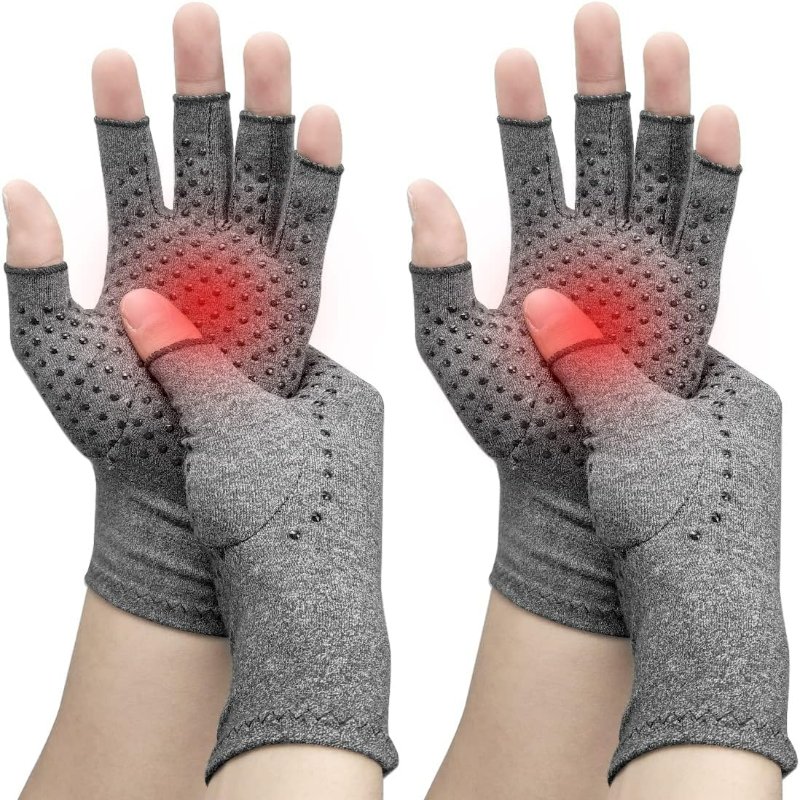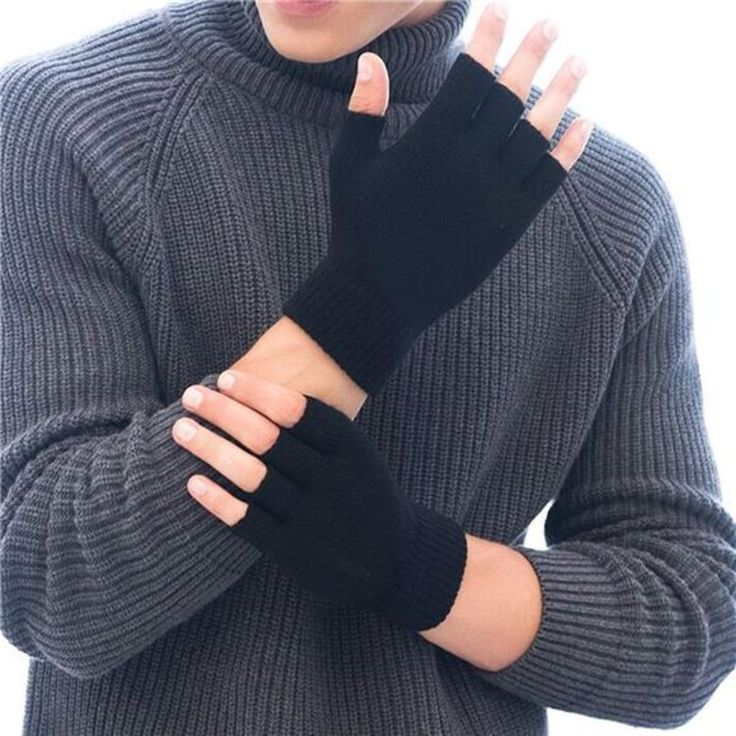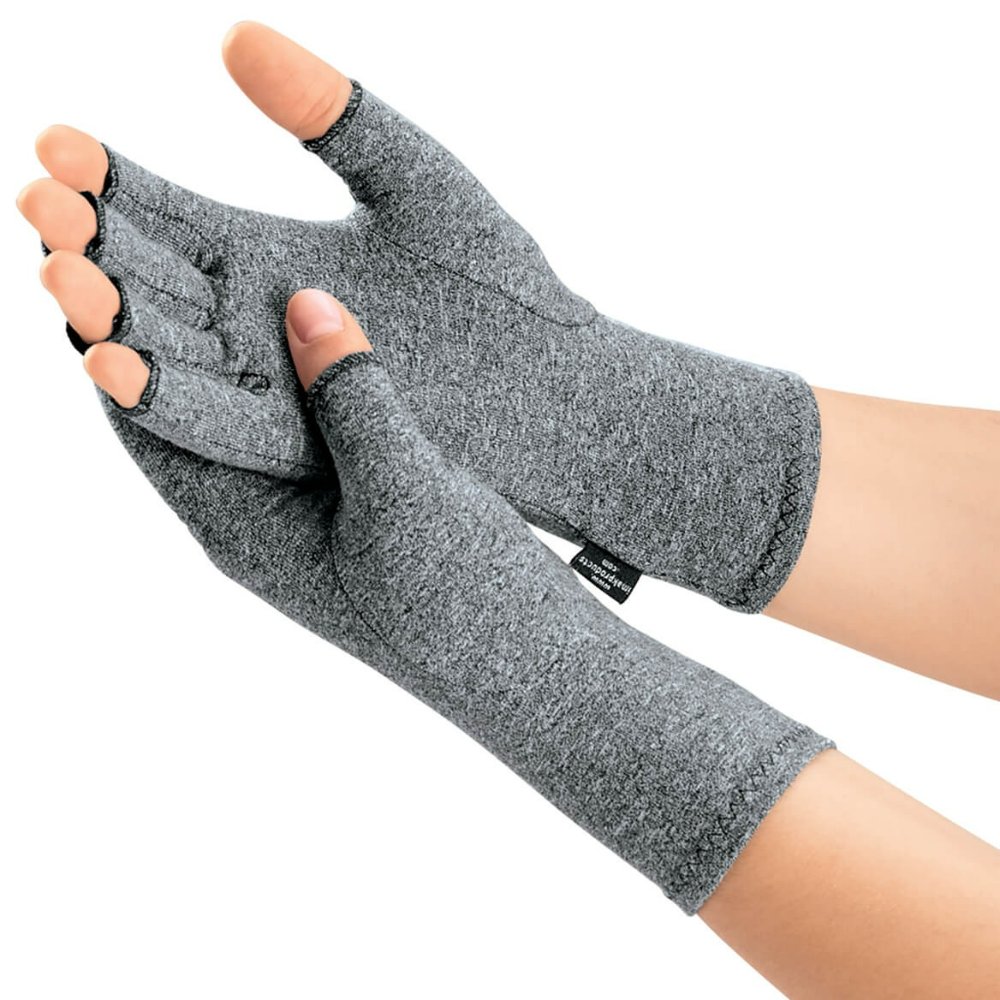What Are Compression Gloves?
Compression gloves are snug-fitting gloves that provide gentle pressure on the hands. These gloves aim to improve blood circulation and reduce discomfort caused by various conditions. They typically cover the entire hand and sometimes the wrist as well. Made from a combination of materials like nylon, spandex, and cotton, they offer a balance of comfort and support. People use compression gloves for swelling, arthritis, and to ease hand pain. They are a non-invasive tool to manage hand health and assist in daily activities. The tightness of the gloves can help decrease edema by promoting the flow of lymphatic fluid out of the hands. It’s important to choose the right size for effective results and comfort. Regular use of compression gloves can be part of a comprehensive approach to reducing hand swelling.

Causes of Swelling in Hands
Understanding the causes of swelling in hands is key before seeking treatment. Swelling can result from various issues. Some common reasons include injury, arthritis, or fluid retention. An injury to the hand can cause inflammation. This inflamed state can lead to swelling. Arthritis, notably rheumatoid arthritis, often leads to swollen hands. The disease makes the immune system attack the joints, causing inflammation. Fluid retention might cause hands to swell, often due to changes in weather, diet, or hormones. Another cause is carpal tunnel syndrome. It compresses a nerve in the wrist, leading to swelling and pain. Lymphedema is also a reason. Here, a blockage in the lymphatic system prevents fluid from draining well. Last but not least, infections or allergic reactions can trigger hand swelling. It’s essential to identify the cause to choose the right treatment, like compression gloves for swelling. By addressing the underlying issue, compression gloves can be more effective in reducing swelling and providing relief.
Benefits of Using Compression Gloves
The use of compression gloves offers numerous advantages, especially for individuals struggling with hand swelling and discomfort. Below are key benefits highlighting why people incorporate them into their health regimen.
- Reduced Swelling: Compression gloves apply constant, gentle pressure. This contributes to reducing hand swelling, as the pressure supports fluid movement away from the hands.
- Pain Alleviation: The gloves help relieve hand pain. Their tight fit can ease throbbing and aching caused by chronic conditions such as arthritis.
- Improved Circulation: By applying pressure, the gloves can enhance blood flow. Improved circulation ensures nutrients and oxygen reach hand tissues more efficiently.
- Support for Joints: For those with joint issues, compression gloves offer support. They make movements smoother and may help minimize joint stiffness.
- Increased Hand Function: With reduced swelling and pain, hands can move better. Users find daily tasks easier to perform while wearing the gloves.
- Warmth for Hands: The materials used often retain heat. This helps keep hands warm, soothing stiff joints, and may further ease pain.
- Non-Invasive Treatment: Opting for compression gloves provides a drug-free way to manage hand conditions. This is appealing for those seeking natural remedies.
Compression gloves for swelling are a simple tool that can deliver significant health improvements for hand-related ailments. While compression gloves may not cure underlying conditions, they contribute to managing symptoms effectively. They serve as an integral part of a holistic approach to hand care. As with any health product, it’s essential to select the proper fit and learn how to use them for the best results.

How Compression Gloves Work to Reduce Swelling
Compression gloves work by applying gentle, steady pressure to the hands. This pressure helps move excess fluid out of the tissues and back into the circulatory system. As the fluid moves away from the hands, swelling decreases. This process, known as graduated compression, is crucial for stimulating the flow of both blood and lymphatic fluids. Proper blood circulation is key to reducing inflammation and promoting healing. Meanwhile, efficient lymph flow helps prevent fluid buildup and the resultant puffiness.
Compression gloves for swelling also support the veins and lymph nodes in your hands. The pressure makes it easier for these structures to move fluids through the body. As a result, they work more effectively. This is especially important for people who have conditions that affect circulation or lymphatic drainage.
Moreover, the snug fit of compression gloves provides a type of ‘massage’ for your hands as you move them. With each motion, the gloves stretch slightly and then return to their original shape. This action helps work the fluids out of your hands, further aiding in swelling reduction.
Lastly, while compression gloves help in managing symptoms, it’s vital to choose the right type and size. Gloves that are too tight can impede blood flow and worsen swelling. Conversely, gloves that are too loose won’t provide the necessary pressure to be effective. It’s a balance that needs to be carefully considered for maximum benefit.
Choosing the Right Compression Gloves
Choosing the right compression gloves is crucial for effective swelling management. Here are some key factors to consider when selecting compression gloves for swelling:
- Material: Look for gloves made from breathable materials like cotton, nylon, or spandex. These ensure comfort and proper airflow around your hands.
- Fit: The gloves should fit snugly but not too tightly. A proper fit ensures optimal pressure without restricting circulation.
- Coverage: Some gloves cover just the fingers, while others extend to the wrist. Choose based on the area of your hand that swells most.
- Compression Level: Compression gloves come in various levels of pressure. It’s important to select the level that your healthcare provider recommends.
- Ease of Use: Consider gloves that are easy to put on and take off, especially if you have limited mobility in your hands.
- Durability: Opt for gloves that are durable and can withstand frequent use and washing.
Selecting the right compression gloves can significantly aid in reducing hand swelling and improving your comfort. Always consult a healthcare professional before starting any new treatment for swelling.

How to Use Compression Gloves Effectively
To maximize the benefits of compression gloves for swelling, wear them correctly and regularly. Here’s how:
- Wear Consistently: Use the gloves as directed, which may be for several hours a day or during certain activities.
- Proper Sizing: Ensure the gloves fit well. They should be snug but not too tight. Incorrect sizing can harm rather than help.
- Gradual Introduction: Start by wearing the gloves for short periods. Increase use as your hands get used to them.
- Careful Placement: Put the gloves on gently. Smooth out any wrinkles that may apply extra pressure in certain areas.
- Clean Regularly: Keep the gloves clean to maintain their elasticity and prevent skin irritation.
- Follow Guidance: Listen to healthcare advice about wear time and any other specific instructions.
- Monitor Hands: Watch for changes in your hand swelling. If gloves cause discomfort, reevaluate their fit and use.
By following these steps, you’ll ensure that compression gloves are an effective part of your swelling management routine.
Additional Tips for Managing Swelling
Beyond wearing compression gloves for swelling, incorporating other strategies can enhance your results. Here are additional tips that can help you manage swelling effectively:
- Elevate Your Hands: When possible, lift your hands above your heart level. This helps reduce fluid build-up.
- Stay Hydrated: Drink plenty of water. Adequate hydration helps your body maintain proper fluid balance.
- Limit Salt Intake: Too much salt can cause your body to retain fluid. Aim for a low-sodium diet.
- Exercise Regularly: Movement encourages blood flow. Gentle hand exercises can support fluid movement.
- Avoid Tight Clothing: Wearing tight wristbands or bracelets can restrict circulation, worsening swelling.
- Apply Cold and Warm Compresses: Alternating between cold and warm can ease swelling and improve circulation.
- Rest Properly: Ensure you’re getting enough sleep. Rest helps your body heal and regulate fluid levels.
- Massage: Gentle hand massages can further promote fluid movement from your hands.
By applying these simple yet effective methods, you can better manage hand swelling and enhance the effectiveness of your compression gloves for swelling.
When to Consult a Professional
While compression gloves for swelling can provide relief, certain signs call for professional advice. Here are scenarios when you should consult a healthcare provider:
- Persistent Swelling: If swelling does not improve with compression gloves for swelling, see a doctor.
- Increased Pain: If pain worsens or does not ease, it’s critical to seek medical attention.
- Color Changes: Watch for color changes in your hands. Blue or white fingers need immediate medical care.
- Reduced Mobility: If you struggle to move your hands or fingers, get a professional’s help.
- Signs of Infection: Swelling with redness, warmth, or fever could signal infection. Contact a healthcare provider right away.
- Underlying Health Conditions: Those with diabetes or circulatory issues should consult a doctor before using compression gloves.
- No Relief: If you see no change after consistent use, check in with your healthcare provider.
Consulting a professional ensures that your use of compression gloves for swelling is safe and effective. They can provide guidance tailored to your specific needs. Remember, gloves are a tool, not a cure. They work best with professional input and a personalized treatment plan.